Small businesses often want to support causes but worry about having enough budget or time to make a real impact.
A cause-based marketing strategy offers a solution by helping you connect purposefully with your audience in ways that fit your company’s size and values.
In this post, you’ll learn a five-step guide to building campaigns that fuel business growth while making a broader positive impact.
What is cause-based marketing?
Cause-based marketing means your business supports a social or environmental cause as part of your brand strategy.
This approach typically involves your for-profit business partnering with a nonprofit or supporting a cause you care about (e.g., sustainability, mental health or education).
Cause-based marketing is usually part of a broader corporate social responsibility (CSR) approach, where you aim to positively impact beyond profit by contributing to communities, industries or the planet.
For small and medium-sized businesses (SMBs), it’s a way to show what you stand for and build deeper customer trust (when done right) without a huge budget.
For example, software-as-a-service (SaaS) company Freemius ran a fundraiser for the nonprofit “Girls Who Code” for its 10th anniversary:
For 24 hours, the platform and participating members of its community donated 100% of revenue share to the nonprofit.
The campaign naturally fits Freemius’s mission to help more women enter tech and give back to the community.
As CEO, Vova Feldman, put it:
Here are a few typical ways SMBs implement cause marketing:
Donate a portion of sales to a local nonprofit. Tie a product, day or campaign to a giving effort (e.g., “This month, 5% of sales go to [Nonprofit name]”.
Sponsor or host community events. Help fund or organize local events for causes that matter to your team or customers.
Launch limited-time products tied to a cause. Create a special item where proceeds benefit a mission (e.g., a welcome offer where all revenue goes to charity).
Run awareness campaigns on social issues. Use your content marketing or social media efforts to educate and spread awareness around topics your audience cares about.
Offer volunteer days and share the story. Let your team volunteer during work hours and highlight their impact publicly to humanize your brand and inspire others.
Authenticity is key, whether you partner with a nonprofit or champion a cause alone. Your efforts should always reflect your core values, not just follow trends.
Why is cause-related marketing so effective for SMBs?
Cause marketing works exceptionally well for small business owners because it feels personal and value-driven – qualities that buyers care deeply about today.
Most SMBs don’t focus on dominating a market. They’re trying to make a difference. Whether you’re helping local communities or pushing for more inclusion in your industry, customers notice and remember.
Here are three key reasons why it’s so powerful.
Builds trust and emotional loyalty
When your company genuinely supports a cause, it signals that you care about more than just profit. That consistency builds trust and customer loyalty.
However, it’s essential to be thoughtful. Buyers often flip-flop between wanting brands to speak out about social and political issues or remain quiet.
Research from Sprout Social in 2019 found that 70% of consumers wanted brands to speak publicly about important causes. More recent Gallup research indicates that only 38% of Americans now want companies to do so.
Let’s say you offer bookkeeping software. You may donate to local adult education programs and share free budgeting tips online.
Choose causes like these that align with your mission statement or community, and avoid getting involved in polarizing issues unless you’re truly committed. For SMBs, missteps can have a bigger impact and make it harder to rebuild their brand reputation.
Creates differentiation without needing a huge budget
Supporting a cause helps you stand out in a crowded market by showing what your business genuinely cares about.
Features and pricing often look the same in competitive business-to-business (B2B) markets. Cause-based marketing allows you to stand out, not by outspending, but by standing for something.
That positioning is compelling for small businesses competing with bigger, more established players.
Imagine a small HR software company that builds a cause campaign around fair hiring. They donate software to nonprofit organizations that help people from poorer communities enter the workforce.
This initiative sets them apart from larger competitors and positions them as a values-aligned partner for a new customer.
Download Your Sales and Marketing Strategy Guide
Fuels organic marketing and word-of-mouth
Tying your brand to a meaningful cause fuels organic word-of-mouth and social sharing, positively impacting your bottom line.
Cause-based marketing creates a deeper story around your company, giving people additional reasons to talk about it.
This kind of attention is often more powerful (and affordable) for small businesses than paid ads. It can also earn media attention for extra exposure.
Take a small consultancy that runs a campaign during Pride Month, offering free audits to LGBTQ+ nonprofits.
The campaign sparks LinkedIn engagement, earns a few niche media mentions and brings in four inbound leads through community goodwill.
5 real-world examples of B2B cause marketing campaigns
B2B cause-based marketing examples align with broader brand values like sustainability or workforce development.
As B2B buying decisions often involve multiple stakeholders, they’re usually more strategic and relationship-driven. Campaigns frequently support long-term brand positioning, talent attraction and partnerships.
On the other hand, business-to-consumer (B2C) campaigns often become quick, emotional buying decisions.
A fashion brand might launch a limited-edition collection supporting breast cancer research, which prompts impulse purchases.
Here are five B2B cause marketing examples and what they support:
B2B company | Cause-related marketing campaign |
Pipedrive | The Small Business Week spotlights SMBs driving sustainable growth to amplify the community and share real-world success stories. |
Deloitte | The WorldClass Initiative aims to impact 100 million futures by 2030 by providing job skills, education and opportunities through pro bono work and partnerships. |
Buffer | Transparent salaries support wage equality and fair pay, aligned with the brand’s honesty and openness values. |
Cisco | The Networking Academy offers free tech training and certifications to underserved communities worldwide. |
SAP | The neuroinclusion initiative creates targeted hiring and support programs for individuals on the autism spectrum. |
Though these B2B cause-related marketing examples are from bigger companies, they’re all about long-term alignment. SMBs can still learn from them.
Choose a cause that reinforces your company’s mission, deepens customer trust and builds a brand that stands for more than just software or services.
How to create your own cause marketing strategy: step-by-step
Cause-based marketing doesn’t have to be overwhelming. By breaking it down into simple, actionable steps, you’ll build a campaign that truly resonates with your customers and drives results.
From choosing the right cause to tracking your impact, here are five steps to creating your strategy.
1. Identify a cause that aligns with your brand and values
The more aligned your cause is with your mission, product, team or customers, the more authentic and compelling your campaign will be.
Partner with a specific nonprofit or support a broader issue independently. What matters most is that it feels like a natural fit. Today’s buyers spot performative marketing a mile away.
When your cause aligns with your company’s identity, it builds trust and loyalty. Choose something that makes sense for your business.
A cybersecurity firm might support digital literacy programs for underserved students. Meanwhile, a coffee supplier might back reforestation efforts in coffee-growing regions or invest in fair-trade certification programs to support ethical farming.
Shaving brand Gillette has a long-standing partnership with men’s mental health nonprofit Movember:

Every November, men stop shaving and grow moustaches to raise awareness and drive donations for the charity.
Here’s how to choose the social causes that reflect your values and industry:
Look inward. What does your company care about beyond profit? Ask your team what causes they support personally.
Look outward. What issues matter to your community? Find out using a customer survey. There may already be a way your product indirectly supports a bigger mission.
Scan your history. Have you donated, volunteered or partnered with a cause in the past? Check if any charitable organizations have contacted you to suggest working together.
Check for overlap. Aim for a cause where your team’s passion and your business’s relevance meet (that’s your sweet spot).
Act with intention (not impulse) and support an issue that reflects your brand image.
2. Set clear goals and metrics
Successful cause marketing campaigns start with a goal that shapes everything, from messaging to channels and metrics.
Once you’ve chosen a good cause, decide what success looks like. For instance, you may want to raise brand awareness, drive donations or increase engagement. Without a clear objective, it’s easy for cause marketing initiatives to feel scattered or symbolic.
Let’s say a software company partners with a nonprofit to offer developer bootcamps for veterans.
The goal is to fund scholarships through a limited-time revenue share and encourage at least 10% of its customer base to participate.
Your primary goal could be to:
Raise awareness of an issue using LinkedIn and Instagram
Generate donations (from your business, customers or both) through a fundraising event
Drive sign-ups, trials or engagement tied to a point-of-sale campaign
Strengthen internal culture and employee morale with volunteering opportunities
Deepen advocacy or customer retention through sponsorship
Once you have a goal, define what success looks like in numbers. The same software company may measure success for its developer bootcamps by funds raised and engagement rates across email and social media.
Your goal metrics could include:
Raising $5,000 for a nonprofit
Reaching 1,000 people with an educational campaign
Logging 200 employee volunteer hours
Increasing social engagement by 20% during the campaign period
Measurable goals keep campaigns focused and help you evaluate real impact on your company and the charitable cause.
3. Involve your customers
Involvement builds a sense of shared purpose, whether letting customers vote on a cause, matching donations or highlighting their stories.
When people help shape your initiative or see themselves reflected in it, they’ll be more invested and likely to share it.
Imagine a fundraising customer relationship management (CRM) platform that asks users to vote on which of three education nonprofits will receive a year-end donation.
The provider also matches all user contributions for the top-voted organization, sharing impact stats along the way.
Customers feel seen and proud to support a brand that listens and gives back. This involvement drives positive word-of-mouth and long-term retention.
Graphic design platform Canva takes customer involvement even further by offering nonprofit users free access to its Pro plan:
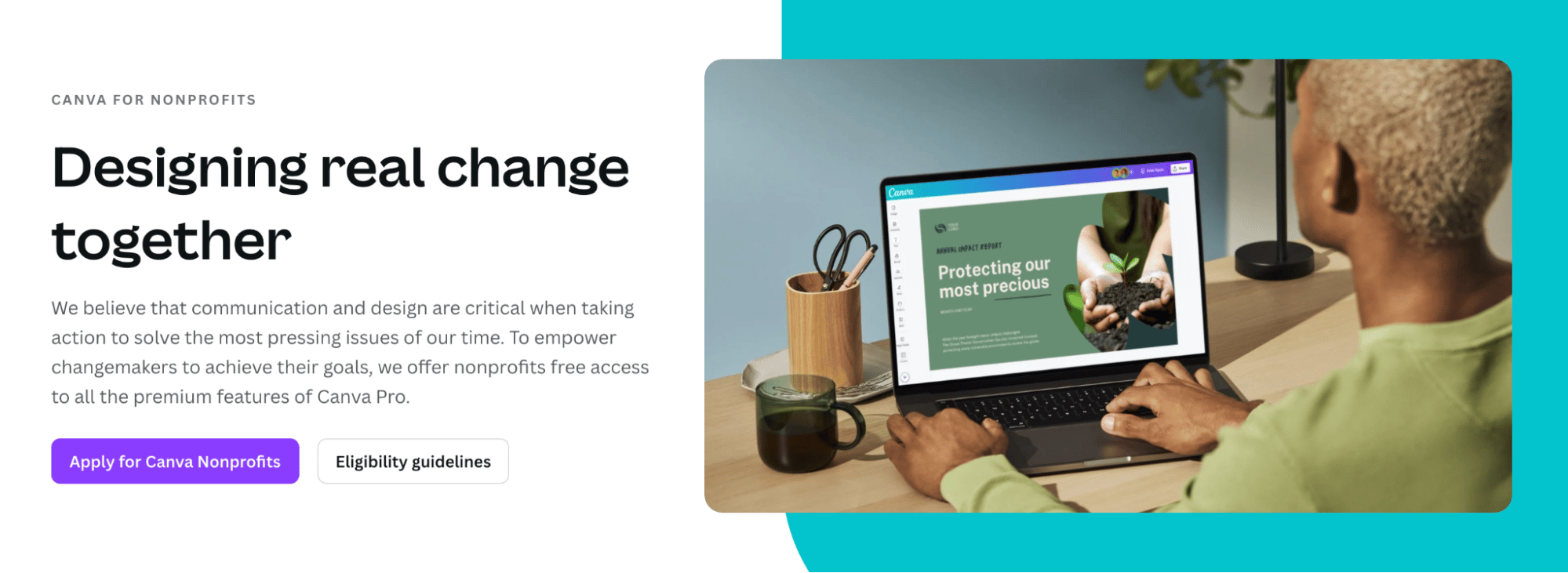
Meaningful support like this builds goodwill and turns customers into loyal advocates for your brand.
Here are four ways to involve your customers:
Let them choose. Run a poll to select the nonprofit or cause your campaign supports.
Match their donations. Encourage giving by offering to match contributions dollar-for-dollar during a campaign period.
Share their stories. Invite people to submit experiences or testimonials related to the cause, then feature those customer stories in your marketing.
Create incentives. Tie donations or impact to customer actions (e.g., “For every sign-up, we donate $10 to [Nonprofit name]”).
Customer involvement boosts participation and turns your campaign into a two-way conversation, not just a company announcement.
4. Be transparent and specific
Specificity about your cause marketing efforts builds credibility and shows it’s not just a PR move.
Vague claims like “a portion of proceeds goes to charity” can feel performative. Being specific builds trust with your audience.
If you’re going to publicly support a cause, make sure people know how exactly. Let’s say you run a three-month campaign in which 5% of all annual plan sales go to a nonprofit supporting refugee job training.
Each month, you publish a short update on a dedicated landing page about how much you’ve raised and what those funds are going toward.
You increase trust and buy-in by sharing your impact, building brand loyalty.
Here’s how to stay transparent throughout your campaign:
Name the organization. Always state who you support or where the money goes to broader causes.
Quantify the impact. Share how much you’re donating, what percentage of sales or how the nonprofit uses the money.
Update regularly on results. Report back after the campaign with outcomes (e.g., funds raised, hours volunteered or people helped).
Avoid exaggeration. Stay honest instead of overstating your impact, even when the numbers are small.
Open communication holds you accountable while keeping your team and customers informed and invested.
5. Promote, measure and adjust your strategy
Even the most meaningful campaigns won’t drive impact if no one hears about them. Promotion helps you rally support, while reporting ensures your efforts achieve tangible outcomes.
Use clear, honest messaging to share:
What you’re doing
Why it matters
How others can get involved
Tracking results also allows you to refine your approach based on what works and doesn’t.
Imagine you’re a project management tool. You launch a corporate giving campaign to support remote learning nonprofits, promoting it with a homepage banner and weekly posts on your LinkedIn account with a unique hashtag.
Your goal metric is “total funds raised,” so when you reach it, you share a summary blog post with photos from your nonprofit partner.
Here are some typical ways to promote your campaign:
Email your audience to share the story behind the campaign, what you’re aiming to achieve and how they can help
Add a homepage feature to your website or an in-app message that explains the campaign
Use your social media platforms to post regular updates, behind-the-scenes stories or customer spotlights
Pitch local media (even small campaigns can still earn coverage, especially if there’s a strong human interest angle)
If things aren’t going as planned (maybe engagement is low or the message isn’t landing), don’t be afraid to pivot.
Adjust your messaging, clarify the impact or involve your audience in another way. A small shift mid-campaign can still make a big difference.
How to use Pipedrive to streamline cause-based marketing
Pipedrive’s powerful CRM system helps you plan, track and amplify your cause-based marketing efforts all from one place.
Start by tracking relationships with nonprofit partners as you would with key accounts. Use your CRM database to log meetings, assign tasks to your team and never miss a follow-up.
A CRM helps you see the big picture of cause-based marketing, from preparation to impact reporting.
Create custom pipelines to manage campaigns and track key milestones:
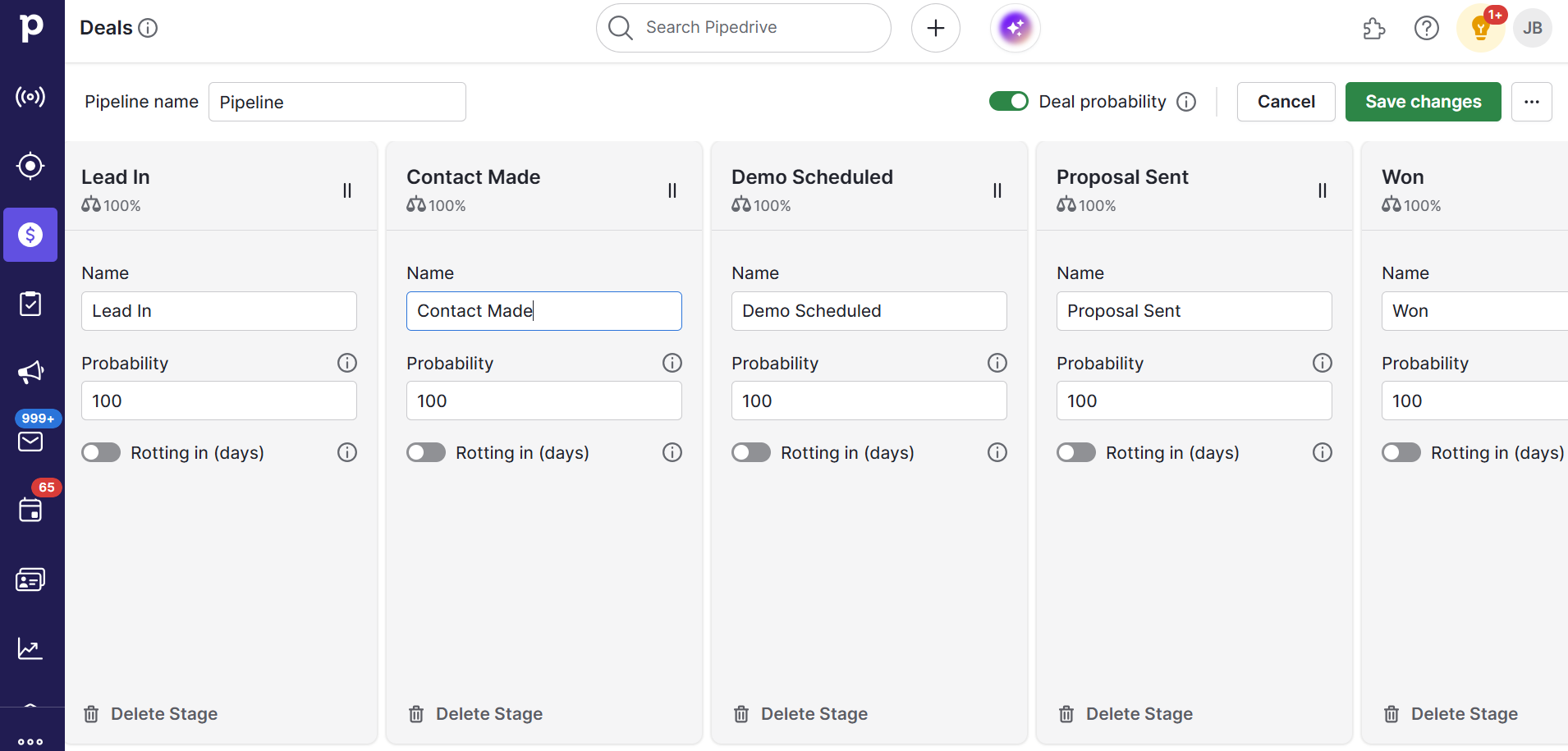
For example, you could have stages like “Planning”, “Launched”, “Measuring impact” and “Complete”. This strategy keeps everyone aligned and helps avoid last-minute scrambles.
You don’t need to email every donor or supporter manually. Use Pipedrive’s Automations to inform and engage your audience without adding manual work:
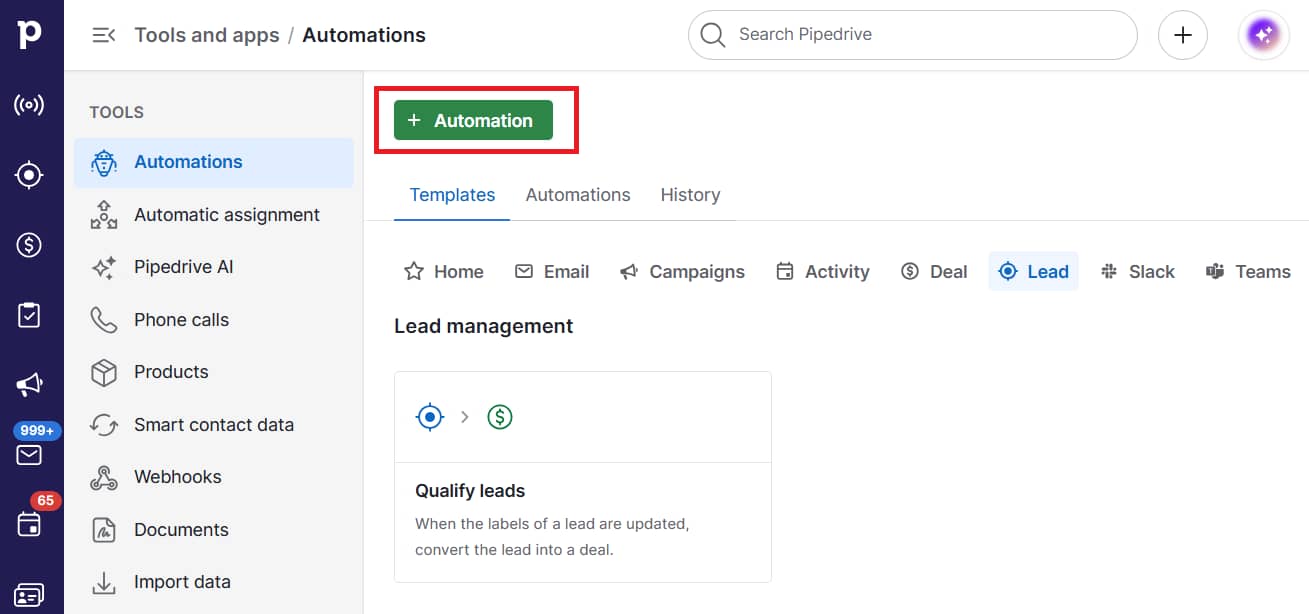
Set up automated workflows to:
Thank participants
Share campaign progress
Send impact stories post-campaign
Use tags or custom fields to group contacts based on interest. For example, you might segment customers by who clicked on a sustainability campaign or donated to a specific initiative:
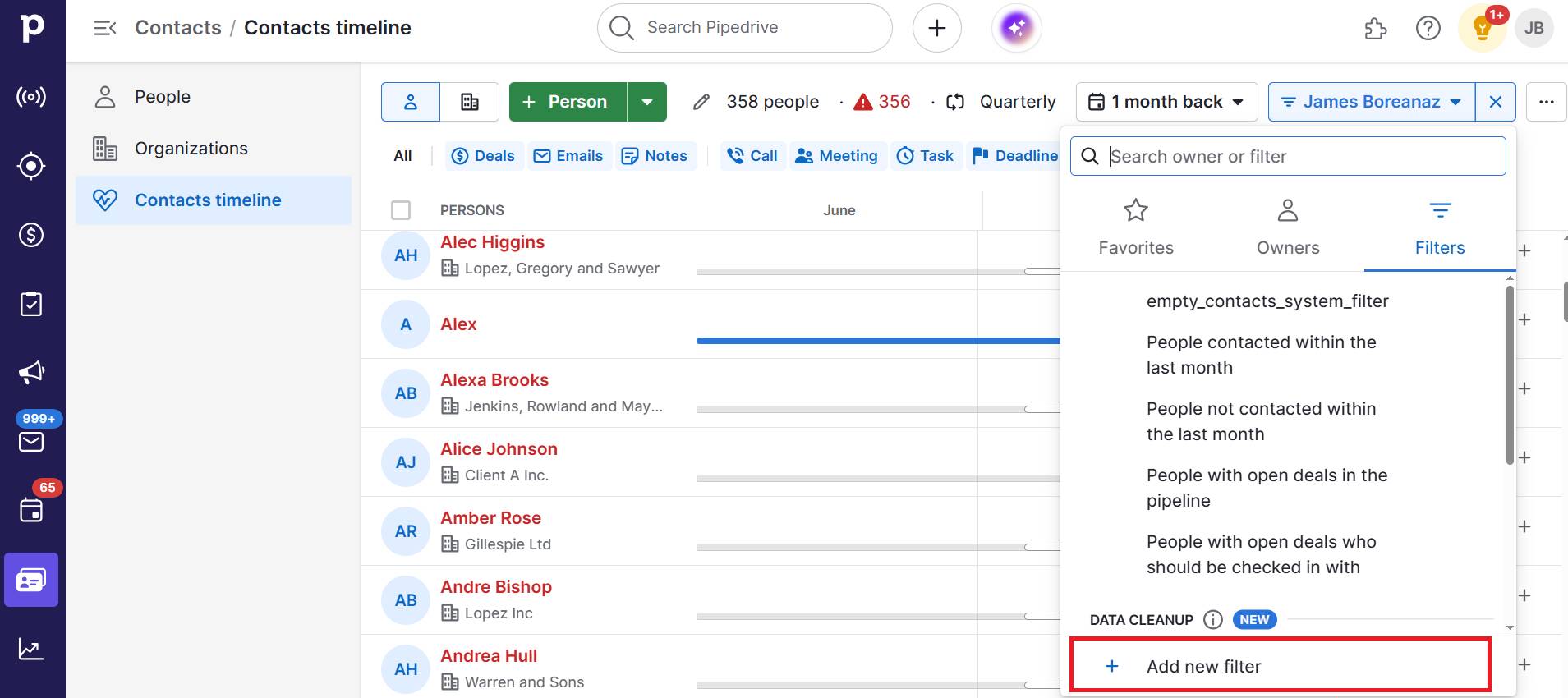
By tailoring communications to those who engage in specific causes, you can personalize future messages or campaigns based on what matters to them.
Pipedrive’s reporting tools also show how your campaign affects engagement, referrals or sales.
Track whether email open rates spiked after the campaign or new leads came in through referrals and see them instantly reflected within user-friendly dashboards:
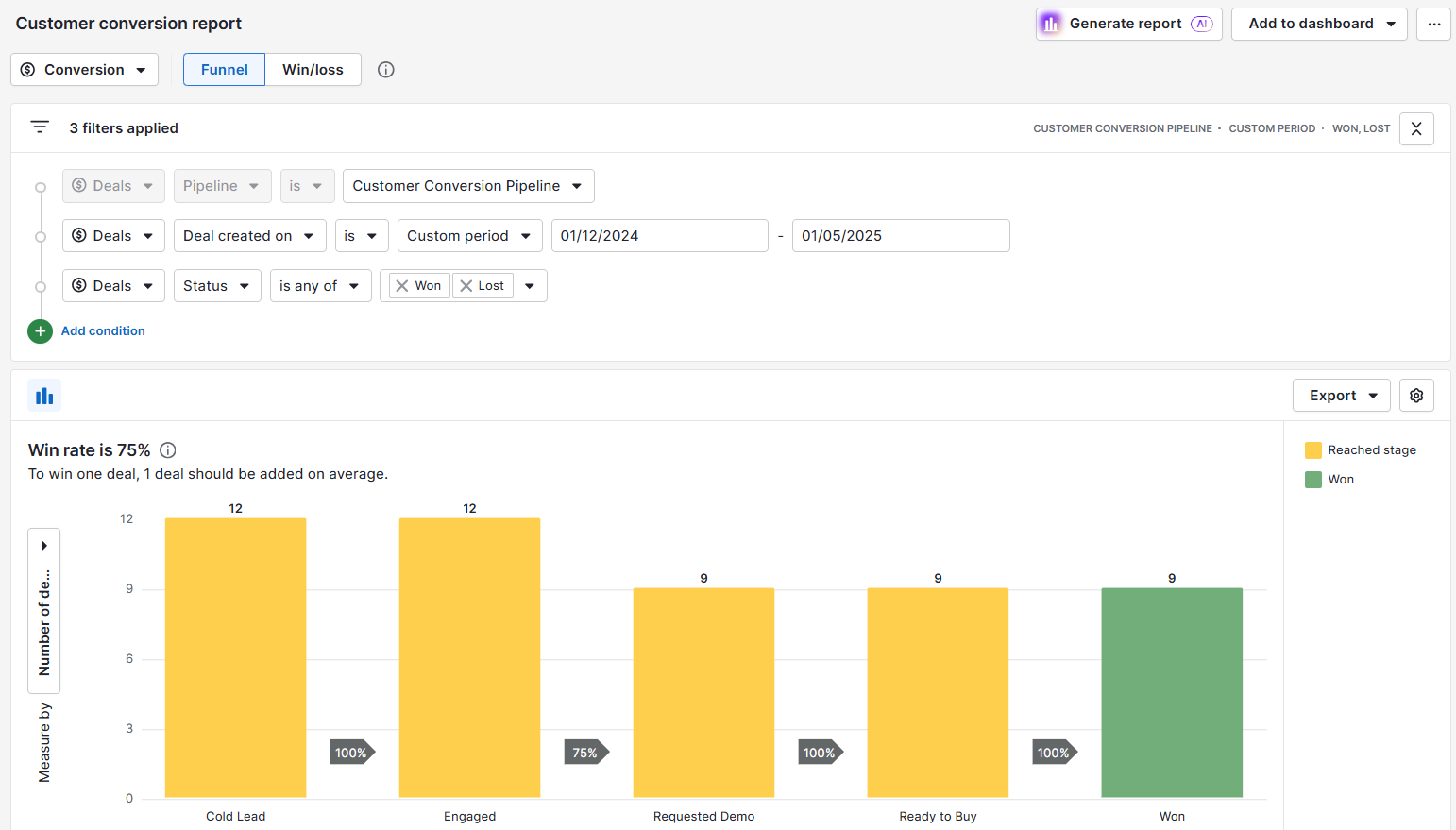
Measuring impact helps refine your strategy and prove the business case for doing good to stakeholders.
Whether you’re planning a donation drive or awareness push, use Pipedrive to run your mission-driven campaigns with the same care and structure as your core business.
Cause-based marketing FAQs
Final thoughts
For SMBs, cause-based marketing is one of the most potent ways to build trust, stand out and inspire word-of-mouth – all while supporting something that matters.
The most effective efforts start with an issue that aligns with your values and the right behind-the-scenes tools. With a CRM like Pipedrive, you’re not just managing campaigns. You’re building a reputation that sticks.
Try Pipedrive free for 14 days to stay organized and focused while managing partnerships, tracking campaign impact and keeping your audience engaged.








